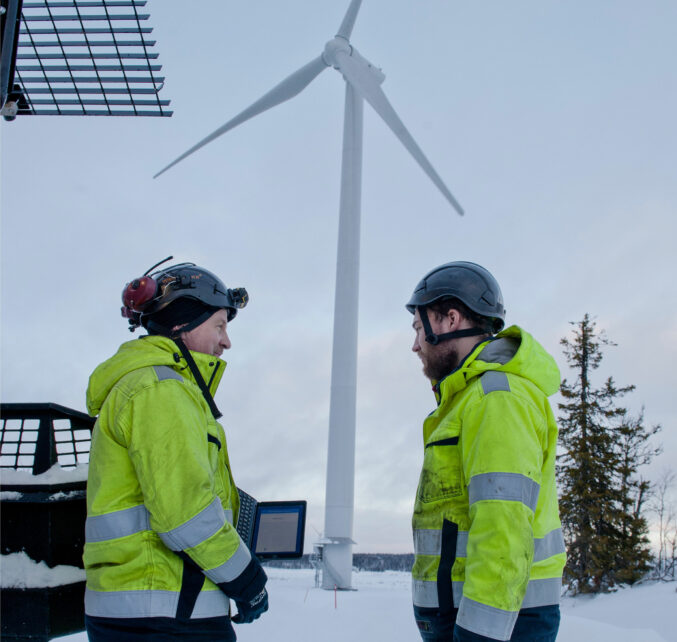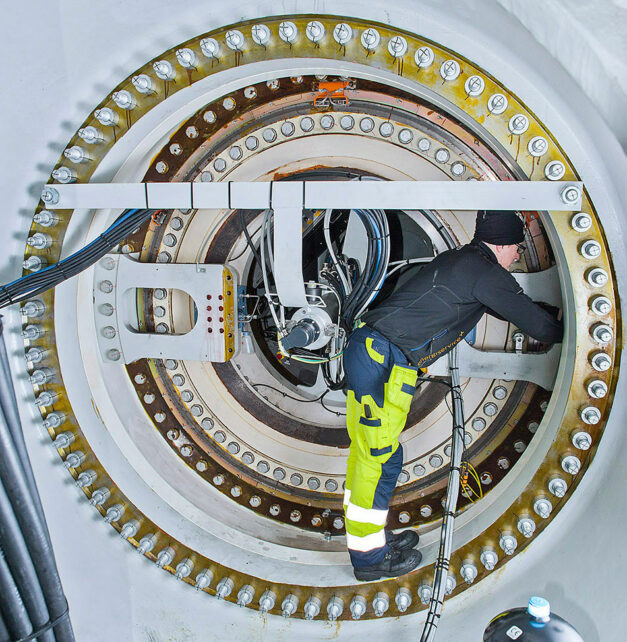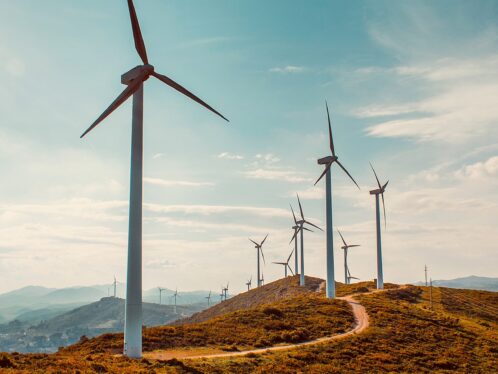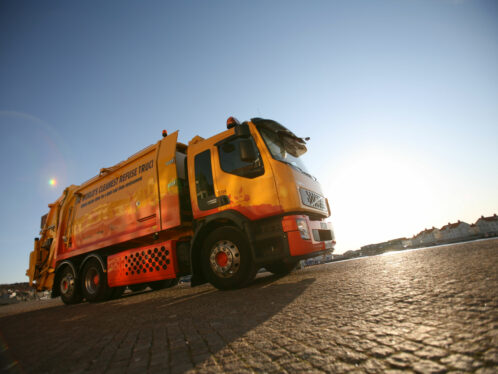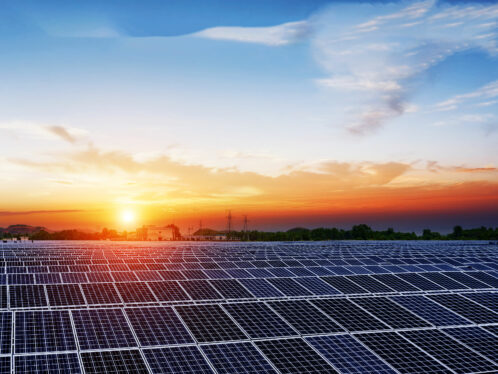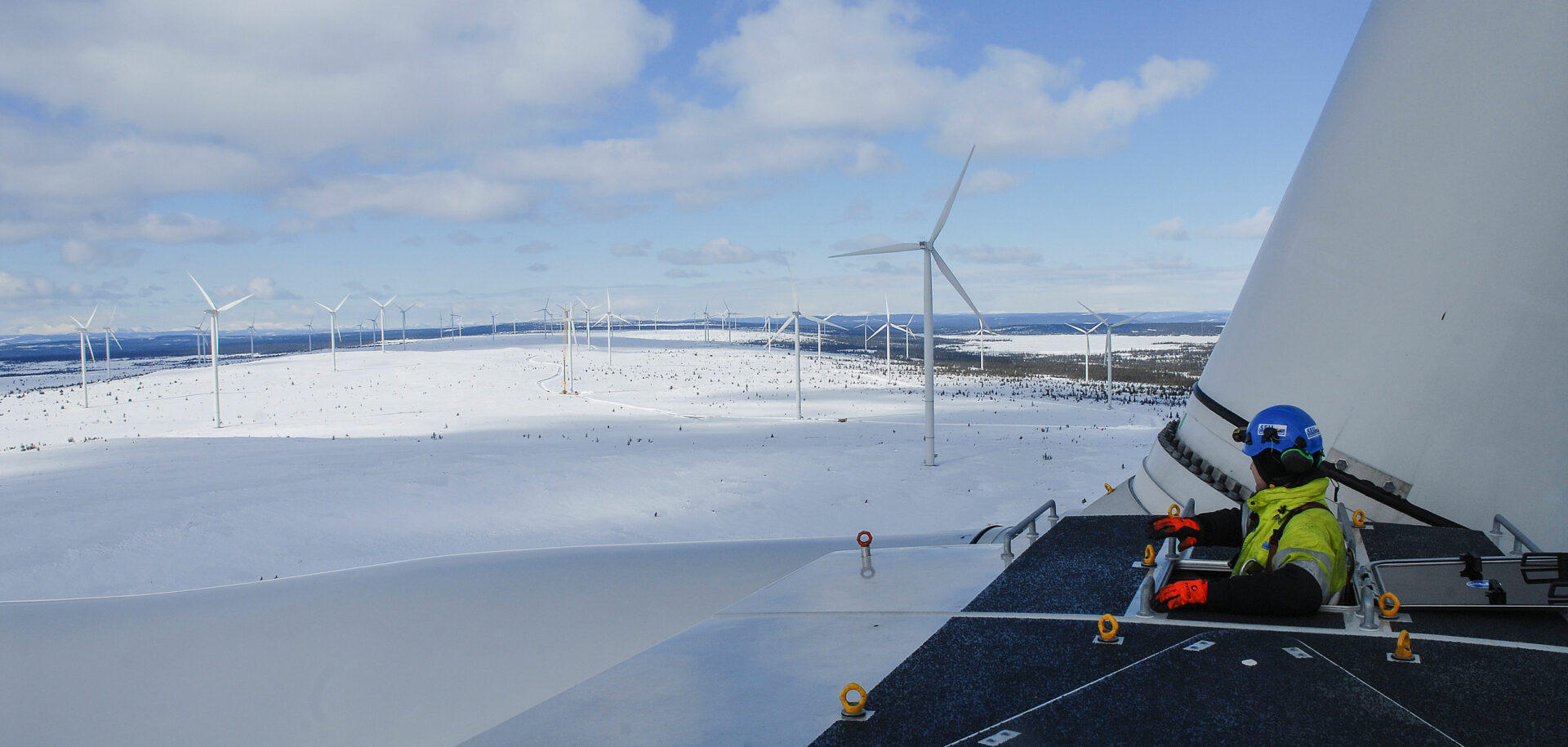
Northern winds generate heat
Sweden takes its environmental responsibility very seriously. The country has set a goal to have 50 percent of its energy generated by renewable energy sources by 2020. The recently completed BlaikenVind wind farm, in northern Sweden, is helping to achieve this.
BlaikenVind is one of Europe’s largest onshore wind farms. It is also the most northerly, located on the 65th parallel north, where the winters are long, dark, cold – and, of course, windy.
Ninety-nine wind turbines are placed on a spacious mountain plateau in an east-west direction, where wind conditions are particularly favourable, with an average speed of 7.5 to 8 metres per second. With close proximity to an existing hydroelectric power plant in the area, the wind turbines can be easily connected to the national grid.
Wind power in the Arctic climate is a global concern, and we are sharing our experiences.
Mikael Lindmark
Managing director and project manager for BlaikenVind
It is the perfect spot for a wind farm. Well, almost. The cold, snowy winters put heavy demands on equipment, and some extra coping mechanisms are required, such as a de-icing system on wind turbines that detects icy weather conditions, vibrations or other potential problems early on and kicks into action before the blades can freeze over.
Wind farms require continuous control and maintenance. At BlaikenVind, maintenance is preferably undergone in the lighter, warmer summer months. “Maintenance measures, especially in the winter, can be costly,” says Henrik Renberg, development engineer at the power company Skellefteå Kraft, which owns BlaikenVind together with fellow energy company Fortum.
SKF for turbine monitoring
The 39 turbines at the BlaikenVind wind farm that were delivered from China’s Dongfang are fitted with the patented SKF Nautilus double row tapered roller bearing. The Dongfang technology eliminates the need for a gearbox and separate generator, which is especially advantageous when it comes to maintenance.
SKF has also delivered the IMx condition monitoring system that monitors all of BlaikenVind’s turbines. SKF WindCon software scans measurements from the accelerometers, which operate around the clock, and sets off an alert if values diverge from the set limits. The IMx-16 system is installed in all of the Nordex turbines, and the latest IMx-8 system is installed in the Dongfang turbines. The IMx-8 offers the same quality, functions and technology as its predecessor but is more compact.
“The space inside a wind turbine is tight, so the main advantage for us is that the IMx-8 requires less space, and that the device can be built into existing cabinets,” says Henrik Renberg, development engineer at Skellefteå Kraft.
“There are large areas of land to plough [in the winter] and high cranes to transport in case parts need to be replaced. We want to avoid this, so it is important that we have a system that helps us plan our maintenance activites as much as possible.”
BlaikenVind was built in four stages, with the first turbines in operation in 2012 and the final stage completed in December 2016. Today, the wind farm’s 99 wind turbines generate about 700 GWh annually.
This is equivalent to the annual electricity consumption of some 160,000 apartments. Wind power generated at BlaikenVind will reduce carbon dioxide emissions by about 640,000 tonnes annually.
In the first two stages of the project, Germany’s Nordex supplied the wind turbines. Built on proven technology, each turbine is equipped with a gearbox that converts the slow rotation of the rotor shaft to a higher speed for the generator. This technology, while effective, includes many moving parts that must stand up to heavy-duty operating conditions. Prior to the beginning of the third phase, another supplier, China’s Dongfang, was able to propose and provide direct-driven turbines (equipped with SKF Nautilus bearings), which do not require a gearbox.
Using both technologies provides, among other things, a safety valve in case BlaikenVind encounters a problem with either system due to harsh weather or other issues. At the same time, the wind farm is acting as a demonstration project to promote renewable energy and the development of new technologies.
BlaikenVind has received a 15 million euro grant from the EU’s NER300 programme for innovative low-carbon energy demonstration projects. “This means that other players in the industry can come here to see and learn,” says Mikael Lindmark, managing director and project manager for BlaikenVind. “Wind power in the Arctic climate is a global concern, and we are sharing our experiences.”
WindCon and Nautilus are registered trademarks of the SKF Group.


